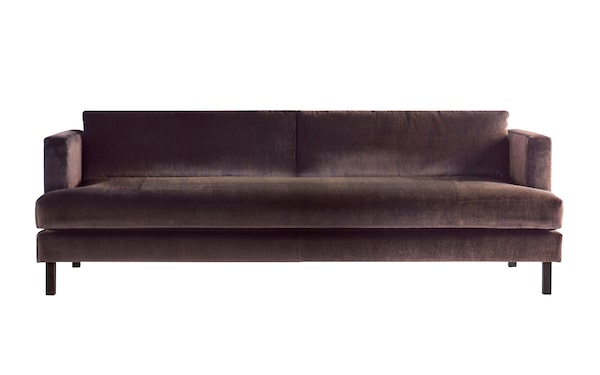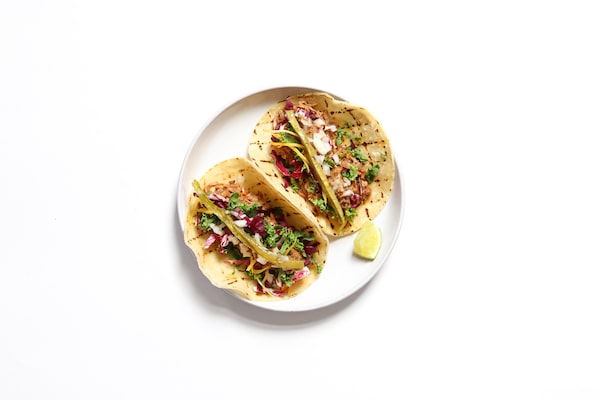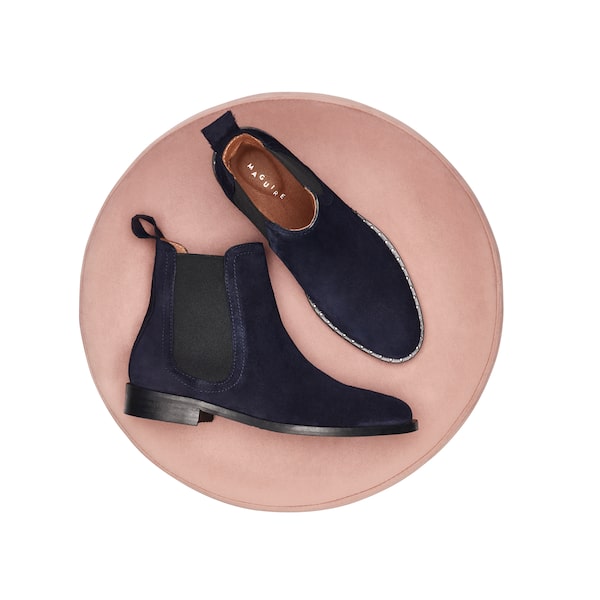Lord Darlington’s quip that a cynic is one “who knows the price of everything and the value of nothing” came courtesy of Oscar Wilde in 1892, but sometimes it feels like we haven’t changed much. And to be fair, cynicism these days is a survival technique.
But it’s important to recognize value and why things cost what they do. In the space between cheap ’n’ cheerful and conscientious consumerism, expectations of cost and value are shifting. That’s thanks in part to direct-to-consumer digital-native brands and transparent consumer-goods companies that deliver more “value” by cutting out the wholesaler/retailer step of the consumption equation, or deconstruct the cost of an item, making that story their marketing plan.
The relationship between price and value? It’s complicated. A number of factors play into what things cost and what we think they should cost. What it all comes down to is what matters most to the person spending the money.
There’s pricing strategy, for example – the psychological impact of price on perception of value. The sparkle of designer-brand marketing and celebrity association that obscure an item’s intrinsic worth are factors in the price. Those who care about branding equate a value to that.
Over the years, readers have gotten in touch with me seeking recommendations for everything from dining tables to trousers. Instead of asking how to recognize what makes a good pair of trousers – materials, hem – I’ve heard shoppers balking at the rising prices of even middle-market contemporary clothing.
I’ve often wished for a labour and process tag – the equivalent of a nutritional-ingredient label. My ideal label would detail how much of the price is markup, profit margin and marketing budget associated with positioning an item; for instance, in taking out ads in Vogue and shouldering the cost of making “free” dresses for celebrities to wear to the Oscars.
There’s true luxury, which is a simple equation of top quality plus time, and then there are designer markups that vary. According to Dana Thomas’s How Luxury Lost Its Luster, the average markup on a handbag is 10 to 12 times production cost; at Louis Vuitton, however, it’s up to 13 times (and those bags never get marked down).
Or take eyewear – whether prescription or sunglasses, high-quality frames are cut from sheets of cellulose acetate (a synthetic fibre made from renewable materials), from established suppliers like Takiron in Japan or Mazzucchelli in Italy. Why does the quality of plastic in your spectacles and sunglasses matter? Eyewear made using acetate of polymers derived from wood pulp and natural-cotton fibres are cured for an extended period to ensure they don’t leach or turn white in contact with skin oils and sweat. Plant-based acetates are more flexible and adjustable for perfect fit, are durable and hold a shape better and for longer. Mass-produced eyewear, even designer fashion eyewear, cuts costs by using injected polyester and nylon (petroleum-based plastics) instead.
For some, value is not necessarily intrinsic to the product but to the experience that surrounds its purchase, and that’s a factor in price, too. When dining out, the value isn’t limited to what’s on the plate but also to hospitality. The “Hi, I’m Justin and I’ll be your server tonight” experience isn’t the same as having a waiter, a sommelier, a busser and that staffer who, like a shadow, appears to stealthily swipe away crumbs and other debris from the tablecloth and replace used cutlery after each course like magic.
I’m grateful that talking about this no longer feels like complaining that we’ve lost sight of the supply chain and value chain. There’s been a disconnect between why things cost what they do, and what’s false economizing. In the West, we’ve become accustomed to artificially low prices – savings to us that come at someone else’s expense.
That’s another issue obscured by the disconnect of an opaque global supply chain that is coming back into view again after preventable tragedies such as the 2013 Rana Plaza garment-factory disaster in Bangladesh – unsafe working conditions. The example I think of often is the chocolate bar. In her investigative 2010 book Bitter Chocolate, which exposed the conditions for harvesting and processing cacao behind mainstream chocolate bars, including use of child labour, Carol Off laid out the reasons why the true cost of variety-store bars from big confectionary brands such as Nestlé or Hershey should cost two or three times what they currently do.
Whether for cutting and sewing or planting and picking, labour costs are higher in Canada. Universal health care, humane standards for working conditions and a living wage that’s fair – these are the things we proudly tout when our country or major cities make international annual rankings of happy/quality/desirable places to live – but that we can be less inclined to pay for when the bill comes due.
Consumers are recognizing the difference between a chocolate bar like one from the Brooklyn-based artisanal chocolate company Mast Brothers, that costs $10 because it’s wrapped in elegant paper, one that costs $4 because it’s fair- or direct-trade and the basic $2 bar that comes at a cost that’s human, but distant and therefore virtually invisible. But that is a cost nonetheless.
Buy the numbers
The math behind a price tag can tell the story of not just product origin, but of the team – sometimes hundreds strong – involved in putting a product or experience together.
Bree sofa by Barrymore: $5,000

Sofas aren’t normally compared to elegant Italian bags or powerful German automobiles, but furniture maker Barrymore shares an important trait with those high-end products: no compromise. Tom Callahan, president of the 99-year-old Toronto company, says many of his customers have sofas that are decades old. “We pride ourselves on hiring highly skilled artisans who do everything by hand. There are no production lines, no toxic chemicals and pure raw materials,” says Callahan, whose facility has no off-gassing (emission of toxic gases). “Frankly, we’re not China. There is no assembly line. Some people get sticker shock when they come into our showroom, but you get what you pay for and we don’t cut corners.”
$1,000 – Raw materials
Includes kiln-dried hardwood frame, eight-way hand-tied springs, cotton felt, lining fabric and soy-based seating foam that produces no off-gassing.
$500 – Fabric
There are thousands of fabric choices and leathers. None are treated with toxic chemicals. (Prices for this model can run as high as $10,000 depending on the fabric, style and design chosen.)
$1,500 – Labour
Includes cutters, sewers, people who fabricate the cushion, the springers, upholsterers, wood finishers and inspectors.
$1,000 – Overhead
Includes rent, phones, insurance, utilities.
$1,000 – Profit
Covers taxes, interest and depreciation.
– Gayle MacDonald
One-night stay in the Newfoundland Room at Fogo Island Inn: $2,075

Fogo Island Inn
The Fogo Island Inn in Newfoundland has 29 rooms in total, with five different suite types. The Newfoundland Room, on the inn’s third and fourth floors, has a wood-burning fireplace with locally sourced furniture and accessories. With every stay, guests have all meals and non-alcoholic drinks included in the room fee, as well as a half-day orientation on the island with a community member.
$1,016.75 – Labour
Includes base wage for all staff that work at the inn plus CPP, EI, benefits, Newfoundland and Labrador health tax. The company has a total staff of 240 people, with about 80 working at the inn for a staff-to-guest ratio of 2:1; at the inn that includes housekeeping, reservations team, front-desk team handling arrivals, guest services (who arrange outdoor and community experiences), drivers, bar staff, dining staff, cooking staff including full bakery staff and a full maintenance team on call 24 hours a day.
$228.25 – Food and room supplies
Includes toiletries, books, sheets, shawls and throws (which are turned over annually), water glasses and carafe, trays, soap, as well as meals and non-alcoholic beverages.
$103.75 – Commissions and fees
Includes fees paid to travel agents, and transaction charges for credit-card payments.
$332 – Operations and administration
Includes heat, hydro, water, insurance, maintenance, property tax, internet and phone, bank charges, shipping and receiving, licences and permits, vehicle costing (every guest has access to a vehicle during their stay), music and entertainment supplies.
$83 – Sales and marketing
Includes memberships in industry organizations, travel to trade shows, digital marketing, printing, photography, public relations.
$311.25 – Contribution to Shorefast Foundation
Donations to the local foundation’s programming, including Fogo Island Arts, a residency-based arts venue; a geologist-in-residence program, Geology at the Edge; microlending to Fogo Island-based businesses and architectural projects.
– Maryam Siddiqi
Lamb birria taco at Tacofino, Vancouver: $7

Amy Ho
“People complain about our prices,” says Vancouver-based Tacofino co-owner Jason Sussman. “I get emails and reviews saying, ‘I was in Mexico and I bought this taco for a dollar’ or ‘I could go to Wal-Mart and get a taco kit for two dollars.'” He says if Tacofino sold this dish, which comes with herb salad, arbol chili, pickled nopales, preserved lemon zest, for $1, it would lose $4.95 on each taco, the price of which must factor in the labour of hand-made products, the high cost of ethically sourced meats and exorbitant rent on some of Canada’s most expensive real estate.
$2.03 – Food ingredients
Includes raw, chopped yellow onion; preserved lemon, made in-house, cured in salt for two weeks; arbol salsa (arbol chilies, salt, lime juice, peanuts, grapeseed oil); pickled nopales; cactus paddle pickled in a brine of water, vinegar, salt and peppercorns; chiffonade of radicchio; chiffonade of Tuscan kale (aka lacinato, dinosaur, black kale); corn tortilla (outsourced); lime wedge; 60 grams lamb shoulder (free-range, antibiotic-free), braised in the oven four hours with ancho, guajillo and arbol chilies, cumin, bay leaf, vinegar, tomato purée, onion and lamb stock (this alone costs $1.45).
$2.10 – Labour
Includes medical/dental benefits and parental leave top-up for staff.
$1.75 – Overhead
Includes $15,000 a month rent, utilities, cleaning, breakage, disposables, taxes, maintenance, insurance.
$1.12 – Profit
Covers the original cost of construction for the Gastown location, built in 2014; approximately $1.3-million was spent on building the restaurant.
– Corey Mintz
Rivoli boots by Maguire Boutique: $230

Myriam Belzile-Maguire saw a gap in the market for high-quality shoes at fair prices and so the former Aldo Group designer created Maguire Boutique, a line of seasonal essentials. Averaging $200 a model, every pair comes with the detailed breakdown of the designer’s cost to produce, market and sell the shoes, so customers know exactly what they’re getting – and why.
$18 – Material supplies
Includes leather and lining from Solofra, Italy, toe cap, back counter from Castiglione delle Stiviere, Italy, shank from Visano, Italy.
$102.65 – Labour
Includes factory profit and operational overhead in Castiglione delle Stiviere, Italy: “The employees are paid between $10.50 and $30 an hour depending on their specialties,” says Belzile-Maguire of the staff at her chosen factory that employs 38 people. While $10.50 is the minimum wage in Italy, positions such as patternmakers can earn higher salaries; also includes salaries for head-office staff in Montreal.
$38.64 – Packaging and shipping
Includes shoe box and paper from Fucecchio, Italy, air freight from Italy to Montreal, Canadian customs fee, fabric bags from Montreal, delivery via Canada Post from Montreal. The brand also covers the postage expense for the “free” returns, says Belzile-Maguire.
$70.71 – Operations and administration
Includes marketing, rent for store and warehouse in Montreal, furniture, travel, website and profit.
– Carly Ostroff
Visit tgam.ca/newsletters to sign up for the weekly Style newsletter, your guide to fashion, design, entertaining, shopping and living well. And follow us on Instagram @globestyle.